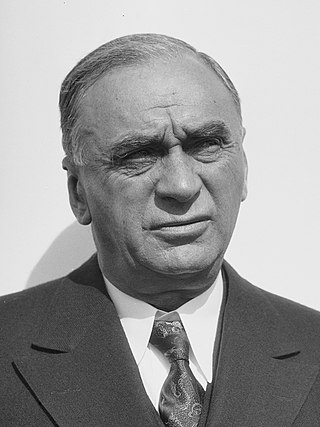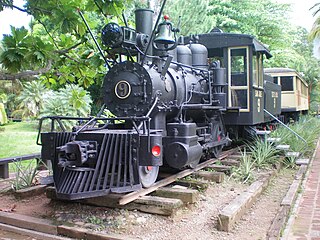The history of Guatemala traces back to the Maya civilization, with the country's modern history beginning with the Spanish conquest of Guatemala in 1524. By 1000 AD, most of the major Classic-era Maya cities in the Petén Basin, located in the northern lowlands, had been abandoned. The Maya states in the Belize central highlands continued to thrive until the Spanish conquistador Pedro de Alvarado—called "The Invader" by the Maya—arrived in 1525 and began to subdue the indigenous populations.

Honduras was inhabited by many indigenous peoples when the Spanish arrived in the 16th century. The western-central part of Honduras was inhabited by the Lencas, the central north coast by the Tol, the area east and west of Trujillo by the Pech, the Maya and Sumo. These autonomous groups traded with each other and with other populations as distant as Panama and Mexico. Honduras has ruins of several cities dating from the Mesoamerican pre-classic period that show the pre-Columbian past of the country.

The United Fruit Company was an American multinational corporation that traded in tropical fruit grown on Latin American plantations and sold in the United States and Europe. The company was formed in 1899 from the merger of the Boston Fruit Company with Minor C. Keith's banana-trading enterprises. It flourished in the early and mid-20th century, and it came to control vast territories and transportation networks in Central America, the Caribbean coast of Colombia, and the West Indies. Although it competed with the Standard Fruit Company for dominance in the international banana trade, it maintained a virtual monopoly in certain regions, some of which came to be called banana republics – such as Costa Rica, Honduras, and Guatemala.

Puerto Cortés, originally known as Puerto de Caballos, is a port city and municipality on the north Caribbean coast of Honduras, right on the Laguna de Alvarado, north of San Pedro Sula and east of Omoa, with a natural bay. The present city was founded in the early colonial period. It grew rapidly in the twentieth century, thanks to the then railroad, and banana production. In terms of volume of traffic the seaport is the largest in Central America and the 36th largest in the world. The city of Puerto Cortés has a population of 73,150.

Samuel Zemurray, nicknamed "Sam the Banana Man", was an American businessman who made his fortune in the banana trade. He founded the Cuyamel Fruit Company and later became president of the United Fruit Company, the world's most influential fruit company at the time. Both companies played highly controversial roles in the history of several Latin American countries and had a significant influence on their economic and political development.

The Standard Fruit Company was established in the United States in 1924 by the Vaccaro brothers. Its forerunner was started in 1899, when Sicilian Arberesh immigrants Joseph, Luca and Felix Vaccaro, together with Salvador D'Antoni, began importing bananas to New Orleans from La Ceiba, Honduras. By 1915, the business had grown so large that it bought most of the ice factories in New Orleans in order to refrigerate its banana ships, leading to its president, Joseph Vaccaro, becoming known as the "Ice King".
Juan Manuel Gálvez Durón was President of Honduras from 1 January 1949 until 5 December 1954. His election, for the National Party of Honduras (PNH), ended the 16-year dictatorship of Tiburcio Carías Andino.

The Banana Wars were a series of conflicts that consisted of military occupation, police action, and intervention by the United States in Central America and the Caribbean between the end of the Spanish–American War in 1898 and the inception of the Good Neighbor Policy in 1934. The military interventions were primarily carried out by the United States Marine Corps, which also developed a manual, the Small Wars Manual (1921) based on their experiences. On occasion, the United States Navy provided gunfire support and the United States Army also deployed troops.
Joseph, Luca, and FelixVaccaro, known as the Vaccaro brothers, were Italian-American businessmen originally from Sicily.

Railroads in Honduras were built in late 19th and early 20th centuries by two competing U.S. corporations, United Fruit and Standard Fruit. All were in the Caribbean coastal area and never reached the capital. In 1993, the combined network had 785 km (488 mi). As of 2006, only three separate segments remain in operation under the management of FNH - Ferrocarril Nacional de Honduras:

In political science, the term banana republic describes a politically and economically unstable country with an economy dependent upon the export of natural resources. In 1904, American author O. Henry coined the term to describe Guatemala and Honduras under economic exploitation by U.S. corporations, such as the United Fruit Company. Typically, a banana republic has a society of extremely stratified social classes, usually a large impoverished working class and a ruling class plutocracy, composed of the business, political, and military elites. The ruling class controls the primary sector of the economy by way of exploitation of labour. Therefore, the term banana republic is a pejorative descriptor for a servile oligarchy that abets and supports, for kickbacks, the exploitation of large-scale plantation agriculture, especially banana cultivation.

The following outline is provided as an overview of and topical guide to Guatemala:

Leon Winfield Christmas, usually called Lee Christmas, was an American mercenary in Central America.
The U.S. Central Intelligence Agency (CIA) has a history of interference in the government of Guatemala over the course of several decades. Guatemala is bordered by the North Pacific Ocean and the Gulf of Honduras. The four bordering countries are Mexico, El Salvador, Honduras and Belize. Due to the proximity of Guatemala to the United States, the fear of the Soviet Union creating a beachhead in Guatemala created panic in the United States government during the Cold War. In an interview, Howard Hunt, CIA Chief, Mexico, stated that "We were faced here with the obvious intervention of a foreign power, because these home grown parties, are not really home grown, they are being funded...or advised by a foreign power, i.e. the Soviet Union." The CIA undertook Operation PBSuccess to overthrow the democratically elected Jacobo Árbenz in the 1954 Guatemalan coup d'état. Carlos Castillo Armas replaced him as a military dictator. Guatemala was subsequently ruled by a series of military dictatorships for decades.

Banana production in Honduras plays an important role in the economy of Honduras. In 1992, the revenue generated from banana sales amounted to US$287 million and along with the coffee industry accounted for some 50% of exports. Honduras produced 861,000 tons of bananas in 1999. The two corporations, Chiquita Brands International and the Dole Food Company are responsible for most Honduran banana production and exports.

Honduras is a republic in Central America, at times referred to as Spanish Honduras to differentiate it from British Honduras, which became the modern-day state of Belize.
The Tinto River is a river in Honduras. It is a tributary of the Guayape River.

Cuyamel Fruit Company, formerly the Hubbard-Zemurray Steam Ship Company, was an American agricultural corporation operating in Honduras from 1911 until 1929, before being purchased by the United Fruit Company. The company was founded in the 1890s by William Streich to export bananas and sugar from the northwestern Cortés region of Honduras to international markets. It was bought by Samuel Zemurray around 1905, who took the company name for his own operation. Zemurray would later become the president of the United Fruit Company. Both Cuyamel and United Fruit are corporate ancestors of the modern-day firm Chiquita Brands International.
The Cuyamel Caves are a group of archaeological sites that consist of a series of limestone caves in northeast Honduras in the hills above the village of Cuyamel. The sites are located near the Cuyamel River, which drains into the much larger Aguán River.
The network of highways in Honduras is managed by the Secretariat of public works, transport and housing (SOPTRAVI), through the General Directorate of Roads, which is responsible for planning construction and maintenance work on the country's roads. Honduras has more than 15,400 kilometres (9,600 mi) of roads. Up to 1999, only 3,126 kilometres (1,942 mi) had been paved.














